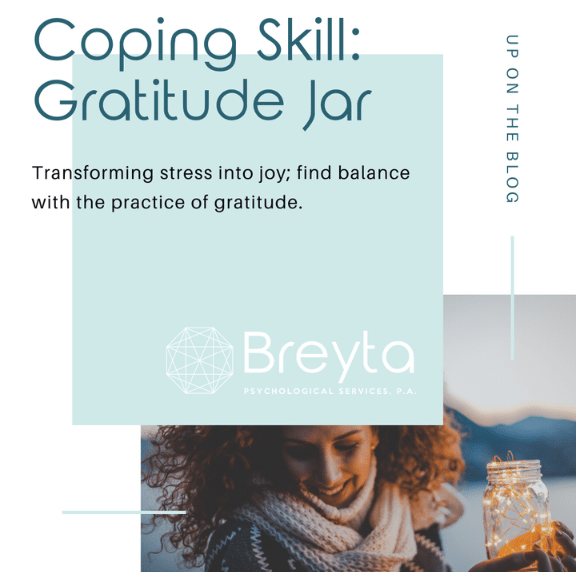Anger: A Misunderstood Emotion
By Lisa J. Ficker, Ph.D.
Emotions are usually thought of as being in one of two camps: the “good” (positive) emotions like joy or serenity and the “bad” (negative) emotions like anger or loneliness. Most people come to therapy seeking to have less of the negative feelings and more of the positive ones as soon as possible PLEASE! Anger is one of the most common distressing emotions –particularly when the object of the anger is a loved one — and yet, ironically, anger and its expression has never been more accepted. Whether it’s a “0 to 60” phenomenon of someone with PTSD or a slow boil waiting to explode, people in general have become more accepting of venting, outrage (especially on social media) and openly acknowledge their own, sometimes deliberate, passive aggressive behavior. Anger has come to be associated with high blood pressure, high stress, unhappy families, and couples who are about to (or ‘should’) divorce or break up. Yet, how many of these associations are actually true?
First, what IS anger?
At its heart, anger is energy for change. Strong energy, serious energy, brimming-with-intensity energy. Like most negative emotions, anger is an internal signal that something in our social environment is not quite right. Or we have done something that is not acceptable to ourselves and we are angry at ourselves. Anger is our mind waving a red flag, inviting us to notice what’s happening in the moment, take stock of a situation, and DO something about it. Anger is not bad or even negative in and of itself. This is reflected in the adjectives that are traditionally used to describe anger, such as “righteous” or “justified” or “legitimate.”
Anger is often aroused when a situation lacks justice or fairness or when boundaries or standards have been violated. As humans, our anger reminds us that we or others deserve better and/or that a situation needs to be corrected. A 2018 Gallup poll found that areas of the world where there is war or oppression report the high levels of anger in the population. Despite not living in a war zone, Americans reported significantly more anger (22%) than our closest neighbors Mexico (8%) and Canada (15%). And anger is on the rise in our society: the latest poll from Gallup in 2020 showed even higher and more intense levels of anger in the USA than in 2018. This is likely a reflection of multiple factors such as the COVID pandemic and political divisions, but the effects are too often felt on a daily basis in our relationships.
Anger “In” vs. Anger “Out”
All people experience feelings in two ways, one of which is largely involuntary and the other which involves a choice. Experiencing anger is not a choice – in fact, none of our emotions are. Feelings spontaneously occur in response to events or interactions and we have little conscious choice about which feelings those are. What IS within our conscious control though, and completely voluntary, is the expression of our anger in aggressive behavior whether verbal or physical. Or we can walk away and allow the storm of strong feelings to blow over. Likewise, feeling angry at ourselves happens in a flash, but we are in control of whether or not we beat ourselves up and unleash our anger in waves of self-criticism that we would never direct at someone else. This type of internal dynamic is often associated with depression.
Often what lies at the root of these types of hurtful relationship dynamics is an assumption that keeping one’s anger inside is inherently unhealthy (anger-in model) that is associated with health problems (e.g., hypertension and other cardiovascular or other stress-related conditions).
Traditional cultural norms 20th Century were rooted in the idea that emotions like anger are inherently dangerous, illogical and meant that a person was “out of control” and therefore, anger expression was suppressed (“anger in” model). Moving from a society that suppressed anger to one that encouraged venting (“anger out”) was a huge cultural shift. But did venting anger really work?
Then George Bach published a book called The Intimate Enemy in 1965 which outlined a new approach for couple’s therapy. Bach believed that the expression of angry feelings would clear the air and that this was healthier than suppressing anger. He encouraged couples to take turns airing their resentments instead of letting the anger “build up” and he even encouraged them to hit one another with soft foam-rubber bats. The thinking was that if you get the anger “out” and express it freely then you would be relieved of it and this process was considered cathartic. Over the next few decades, this assumption became integrated into our culture and many people consider this idea the norm or “common sense.” We even have believed that it relieves stress and is healthier for us.
Unfortunately, this type of therapy had little empirical support. The hope was that once a person got their anger “out”, then positive feelings would naturally rush in to fill the vacuum. Unfortunately, this turned out to be too optimistic. Longitudinal research by John Gottman and Robert Levensen over the course of many decades has found that conflict in relationships is very, very common and not particularly problematic. What does lead to relationship dissatisfaction (among other variables) among couples in particular is an unleashing of criticism and contempt, which predicts divorce or break-up if left unaddressed. Instead, their research has emphasized the importance of positive affect – expressions of appreciation, understanding, etc. during conflict. This means that the most successful couples are those that can be angry and can express their anger, but not be so overwhelmed by it that they cannot find some good in their spouse or in the situation or relationship as a whole and be able to express that as well. This finding has dove-tailed with research on anger conducted by health psychologists.
Anger and Hypertension: Importance of Underlying Emotions
Health psychologists study mind-body interaction seek to understand the role of emotions in the development and course of various diseases. They found that people who expressed their anger freely actually had higher blood pressure than persons who adopted an anger-in approach and simply walked away, refusing to engage in angry exchanges. However, those people who kept quiet about their anger and endorsed feeling guilty about expressing it, also had high blood pressure. The group that had the lowest blood pressure were a group who were labelled as “anger control.” These were individuals who initially looked like anger-in individuals, but who, after they had allowed themselves time to cool down, communicated their feelings and did so in a way that they felt good about afterwards. Apparently, the number of people who feel guilty about insulting others or engaging in risky behaviors, such as criticizing their boss, often report guilt afterwards and do not feel a sense of relief. One interesting finding that emerged over time was that a main difference between the groups was the level of anxiety. In all anger groups, those persons with the most anxiety were least likely to engage in anger-control strategies and also had the worst blood pressure readings. As it turns out, learning about the role of anxiety in fueling anger was only the beginning.
Anger is a multi-layered emotion
Psychologists consider anger to be a secondary emotion which means that it often masks other, more complex emotions. Sometimes the level of anger that people experience – the intensity of it, in particular– does not match the situation that provoked it. A child’s refusal to do homework or a spouse’s distractedness may invoke a level of internal rage (or outwardly, raised voice or yelling) that is out of proportion to the stimulus. When people assume that venting (anger-out) is somehow relieving internal emotional pressure, they may not look deeper to discover the feelings beneath their anger. Repetitive angry expressions can become habitual.
Picture anger as the “tip of the iceberg” and that the bulk of a person’s feelings are actually hidden. If we look underneath the surface, often there is a range of more complicated emotions such as anxiety, grief, helplessness, or regret. Anger can serve a protective purpose, especially for those who were raised to feel that expressing emotions creates vulnerability which is risky or dangerous. Anger is often confused with strength, particularly for men, who may feel more comfortable with being irritated or annoyed than crying or admitting to being scared or hopeless.
What to do?
Of course, it takes time to recognize these underlying emotions and to express them, yet there is tremendous relief when this occurs. Timing is essential to understanding this process since people are unable to access these deeper emotions when they are over-stimulated or actively angry. So, give yourself time to cool off, recognize when you need to leave a situation or conversation, and explain that you will return. Take some deep breaths, splash cold water on your face, or go for a quick walk or jog. Physical exercise can bring relief to angry feelings. Distraction can also be helpful (i.e., read a magazine, sing a song, listen to some music, or take a shower). Everyone self-soothes in their own way and it is an important coping skill to figure out what is soothing to you.
Return to the situation when you feel ready. Sometimes immediate relief can occur simply by voicing feelings to a loved one. Try to use an “I statement” to share your own experience, rather than beginning your communication with “You shouldn’t have …” If someone did something egregious to offend you, begin your statement with “When you …, I felt …” and then after calmly explaining your feelings, try to identify one need you have that builds a bridge to repair the situation.
If these steps are difficult for you, it may be helpful to seek out a non-judgmental, objective third party, like a therapist. Therapists can offer coping skills to help the experience of the emotion be not quite so overwhelming, to raise awareness of when it is coming, and eventually, reduce the strength of the emotion. Often the path to being able to use coping skills effectively is achieved by developing insight on the role of the emotion in your life, its context, history, recognizing the variety of ways that it is expressed, and grasping the purpose of the emotion (e.g., Why this emotion and why now?). Gaining insight into the underlying emotional dynamics of anger will, over time, unlock it’s power over you. Eventually, you will find that anger can be a useful tool that provides energy for change in your life and relationships that serves a vital purpose.
Dr. Lisa Ficker specializes in health psychology. She excels in treating individuals who are facing physical problems that impact their mental health, clients who are exploring new identities, professionals experiencing stress, or individuals who may be struggling with attention or memory, as well as couples who would like to improve their relationship. To schedule an appointment with Dr. Ficker, please contact us today.





